Alright, let’s make a pact before I come anywhere near this article: no jokes about “wraithboners” or anything of the sort. This is a sacred trust, friends. Please don’t violate it. Now that you have sworn the oath, click to read the CA-2018-updated article or check out the Tactics Corner for more reviews and strategies.
Overview
The Bonesinger is a model with an interesting history, originally dating back to the “Eldar Musician” models of the Rogue Trader era. As the game progressed, these were melded into the more modern versions of the lore by explaining that such musicians shaped and created the wraithbone structures that constitute almost all Eldar architecture and many of their weapons of war. An official Bonesinger model was eventually released through Forge World (and had some little-used rules in several editions) before fading back into obscurity… until recently, when Games Workshop re-released the model as a limited edition piece for part of a series of splash releases near the start of 8th Edition. Along with the re-release of the model came a new set of rules, updated for this edition and available for free; though hardly a critical part of a competitive army, it is still a nice little piece to have in the arsenal.
A Bonesinger has a pretty standard Eldar statline- strength and toughness three, weapon and ballistic skill 3+, movement seven. Since it is a character, it comes with a respectable four wounds, though only a single attack and leadership of seven are both rather sad. Its armor save is a pitiable 6+, though like all Eldar psykers it has a 4+ invulnerable save that it will almost always use instead. At 70pts, a Bonesinger isn’t horribly priced, especially when looked at in the context of other “healer” characters like Techmarines, Apothecaries, Big Meks, etc.
Wargear and Special Rules
A Bonesinger comes pretty lightly equipped, even for an Eldar model- though it has Ancient Doom and Battle Focus, it can’t realistically ever use either of them to even the most minimal of effects, as it doesn’t come with a ranged weapon and is straight-up terrible in melee combat. It does have a unique melee weapon, though perhaps we ought to be saying “unique” instead, as it’s strictly worse than the weapons carried by other Eldar psykers- no surprise, given that Bonesingers are not supposed to be combat personnel in the first place. Its Psytronome does d3 damage per hit, but has no AP and no special rules and thus is pretty unlikely to ever be able to push that single swing through.
Aside from that, a Bonesinger is a psyker, albeit a very unusual one. It knows only the Smite power and not any others from the standard Eldar tables- rather odd, all things considered, although as it is a “full” caster (unlike Warlocks) this can actually be a non-trivial feature. However, most commonly you will not be using this psychic ability due to its Path of the Shaper rule, which allows you to trade out casting a psychic power to instead heal a Craftworld vehicle or wraith unit within 3″ of you for d3 wounds (though no model can be healed in this way more than once per turn.) With no roll needed to trigger the ability, this ends up being potentially quite useful, especially since some Eldar vehicles can be incredibly durable already.
Uses
I imagine it’s fairly obvious to anyone with even a cursory understanding of the rules, but Bonesingers are supposed to help keep your vehicles alive- a rather “well duh” statement. The trick, as with most models of this type, is finding something that is worth keeping alive, or at least worth the 70pts you spent on the Bonesinger. Wave Serpents might seem like an obvious choice, and at times that may be correct, but you are typically purchasing a Serpent in order to protect some other unit, not for the value of the Serpent itself, so they are actually a bit mediocre in that regard. “Gun tanks” like the Falcon, Fire Prism, and Night Spinner are probably better choices- the potential to keep one of these in the fight a bit longer can be quite attractive, all the more so if your heal is able to bump them up a wound category when they get damaged (and thus also improve their firepower.)
Another prime target are the wraith units, of course, with the Wraithlord and Wraithknight being the most popular ones. Both have the potential to attract a lot of attention from the enemy and both suffer from degrading statlines; the Wraithlord’s wound chart is small enough that even a small restoration can significantly improve its performance, whereas with a Wraithknight your healing is much less likely to actually up its stats much (since it has such a large wound track), but it also is unlikely to die so quickly that you don’t get to heal it several times. Note that a Bonesinger is also capable of healing Wraithguard and Wraithblades, though it cannot restore dead members to the squad (unlike an Apothecary.)
If you are planning on getting a lot of use out of a Bonesinger, you need to plan your army (and your strategy) around being able to use its abilities. Make sure you have enough targets to apply the healing to effectively- the enemy may not always shoot at what you want, or may kill targets before you have a chance to heal them. The more vehicles and wraithguys you have around, the better the odds that one of them will need the odd wound or two restored- and just as importantly, make sure that the Bonesinger can get to them- while it is quite capable of healing up aircraft like the Hemlock, these units high movement rates mean that it is unlikely to be within range of the effect. Even units like the Wraithlord will quickly outpace a Bonesinger if you aren’t careful; in extreme circumstances, you might even consider giving a Bonesinger the Faol’chu’s Wing relic to help it stay in range of its targets.
Remember, also, that you aren’t limited to just one Bonesinger on the field if you’re running an army like this- though multiples can’t heal the same model, they can certainly heal different models when they incur wounds, a situation that will usually come up. You can also use the Tears of Isha stratagem to heal an additional d3 wounds on something, which can really make the opponent’s job frustrating if they spent the whole turn trying to take one of your units down only to see it pop back to nearly-full health.
Lastly, but arguably even most importantly, if you are trying to pull all of these tricks off with a Bonesinger, remember that keeping your units alive can mean more than just healing them- defensive spells such as Conceal or Fortune can really extend a unit’s lifespan, as can stratagems like Lightning Reflexes or upgrades like Vectored Engines. Even just keeping your units in cover or taking advantage of the Alaitoc bonus can slow an opponent’s damage down enough to the point where your healing can start to swing things- and all of these work together multiplicatively, increasing in effectiveness the more of them you use. An Alaitoc Wraithknight hiding in cover with Fortune on it presents an amazingly difficult target for your opponent to get rid of, but is still enough of a threat that it can’t be easily ignored- and since armies won’t typically be able to down it in a single turn, you should be able to get some serious healing done on it under most circumstances.
However, before you rush over to Ebay or Barter Town to grab up as many Bonesingers as your wallet can allow, realize that as a strategy the Bonesinger is fundamentally reactive and thus fundamentally flawed in 8th Edition. Although it does a good job of doing the thing it’s there for, in a competitive tournament you can’t expect your opponents to give you enough time to repeatedly heal your big targets- things die in 8E, even when you put up all your fancy Eldar tricks on them. A strong tournament army will down that buffed Wraithknight in one turn, and moreover will kill a second one the next turn if you let it. Playing a reactive, defensive strategy is often a losing gambit in this edition, and you shouldn’t expect to go crushing any tournaments with the Bonesinger combo. But that said, it is a fun little pieces that can be great in pickup games, narrative events, etc, where you aren’t as likely to see powerful alpha strikes or lists toting masses of Lascannons and the like.
Countering
There is a very, very simple way to counter the Bonesinger: kill shit dead. A Bonesinger can’t bring back models that have been removed as casualties, only those that are wounded; as such, if you point all your guns at the thing it is trying to protect, you probably should be able to down it (unless it is a massive investment such as that aforementioned Wraithknight, and even then it’s certainly within the realm of possibility.) If you’re playing “right” you really ought to be focusing your fire to remove entire units in most cases already, but the Bonesinger really brings home this fundamental point about the game: don’t. Leave. Things. Alive.
A Bonesinger also can’t be everywhere at once, nor can the buffs protecting its friends. If your opponent slaps all of their psychic powers down on a single unit to make it super-invincible… shoot something else instead. This isn’t 7th Edition, where a single ultra-deathstar can wreak complete havoc on you; virtually all armies require a multitude of different units to cover each others’ weaknesses. Kill the units that aren’t buffed, or that are too far away from the Bonesinger to be healed (though remember that it can advance and still use its healing magic without penalty- 16.1″ is the magic distance outside of which it cannot reach.)
Final Thoughts
I think returning the Bonesinger to the game with its limited-edition model (along with the other Autarchs, Warlocks, etc) was a very clever move by GW- it not only brought another interesting unit back into the army that did something almost entirely unique to the Eldar lineup, at the same time it also capitalized on the history of the game (by invoking nostalgia from older players and drawing newer ones back to what previous editions were like) while also sidelining the pirate market for such outdated models. A three-in-one swoop like that is both good game design and good business sense, and I think they should be rightfully lauded for it. If you weren’t lucky enough to get the model when it was released, thankfully GW has said that such “limited” models will eventually be put up for sale again- though in the mean time you may find that converting one of your own or searching the secondary market are you only options.
As always, remember that you can buy your wargaming supplies at great discounts every day from the Frontline Gaming store, whether you’re looking to expand your current armies or start up a new one.

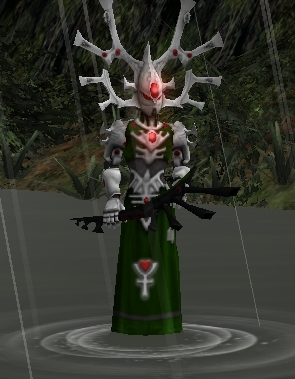
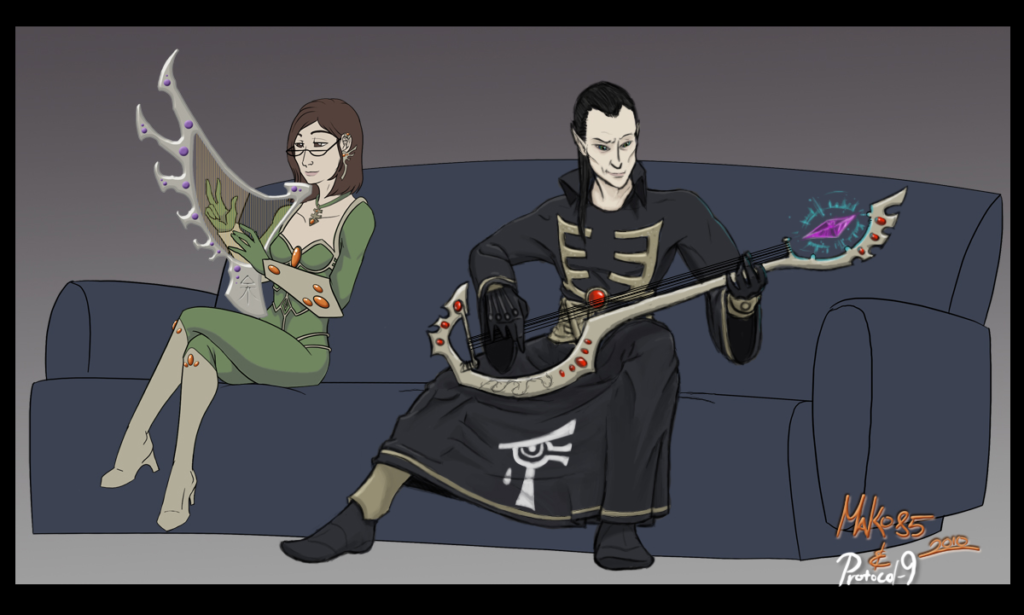
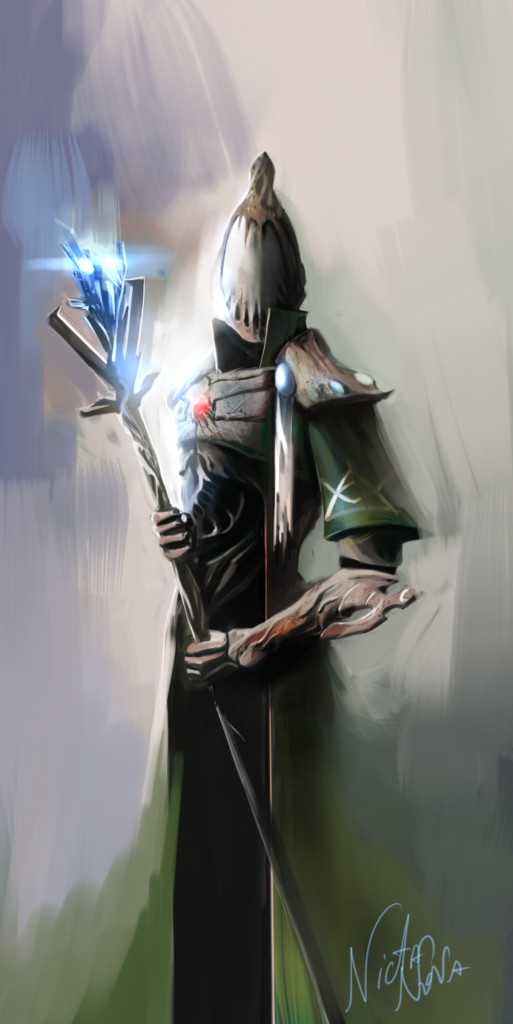
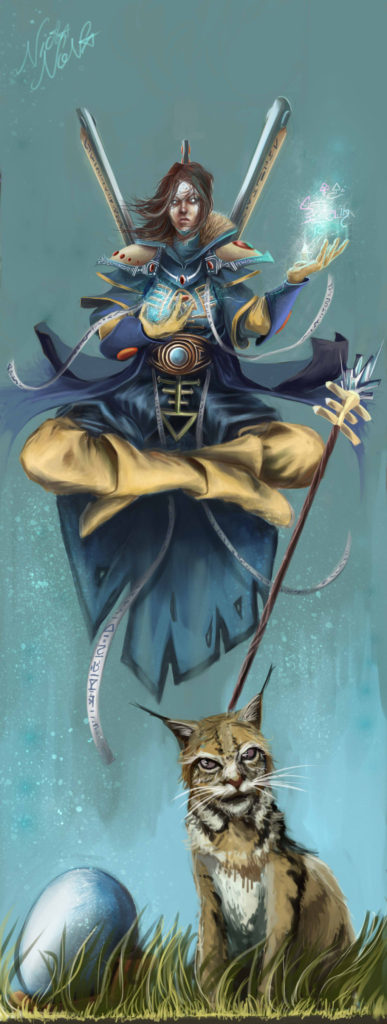
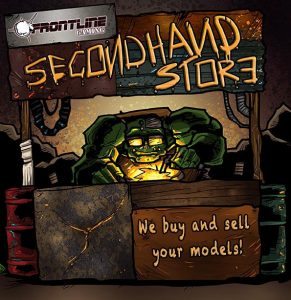
Nice article, AP. I really dig the Bonesinger for my Iyanden army where he can help keep the Wraithknight alive and kicking and as you noted, the ability to Smite helps give him some offensive punch as well.
All I know is a bonesigner once single-handedly made me lose when it psychic a lemon Russ off an objective then took it. So I hate them :p
Haha, my desire to own one is increasing…. =P
The Bonesinger has a great model, I think it probably gets the best value with a Wraithknight, since it’s hard to focus one down in one turn. Combined with Fortune on a Scattershield/Sword Knight, your opponent will have to dig through a good armor save or invulnerable, and a strong Feel No Pain, giving you plenty of time to heal it up.
Yeah, a Wraithknight will give you best bang for the buck, I agree.
And I think I seriously might be the only one using him, but the double Wraith Cannon Knight is my favorite. I have never been disappointed with him.
I actually ran him with a double-Wraithcannon double-Starcannon version a while ago- I wouldn’t call it gamebreaking, but it was a solidly-tough big dude. Alaitoc + Fortune + Bonesinger kept him doing his thing all game long, and the ability to smash one target pretty hard at range and then tap dance all over something else was pretty decent overall.
Sword Knight just doesn’t gain enough from using the sword- it’s only more effective than his dancing feet against a pretty limited class of targets, and you give up a lot to get it. It does have the advantage in price, but when you’re already spending 600-700, another 75pts isn’t a dealbreaker.
Yeah, I love using my Wraithcannon WK. He does work, every game. I do think they’re a bit overpriced, but they’re certainly not as bad as people claim them to be.
But yeah, 100% agree the Bonesinger is a great investment. I run mine in an Iyanden army and so also have other Wraith units running around to benefit, too. And when you pop the Psytronome? Holy crap, lol, it is ridiculously powerful.